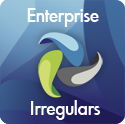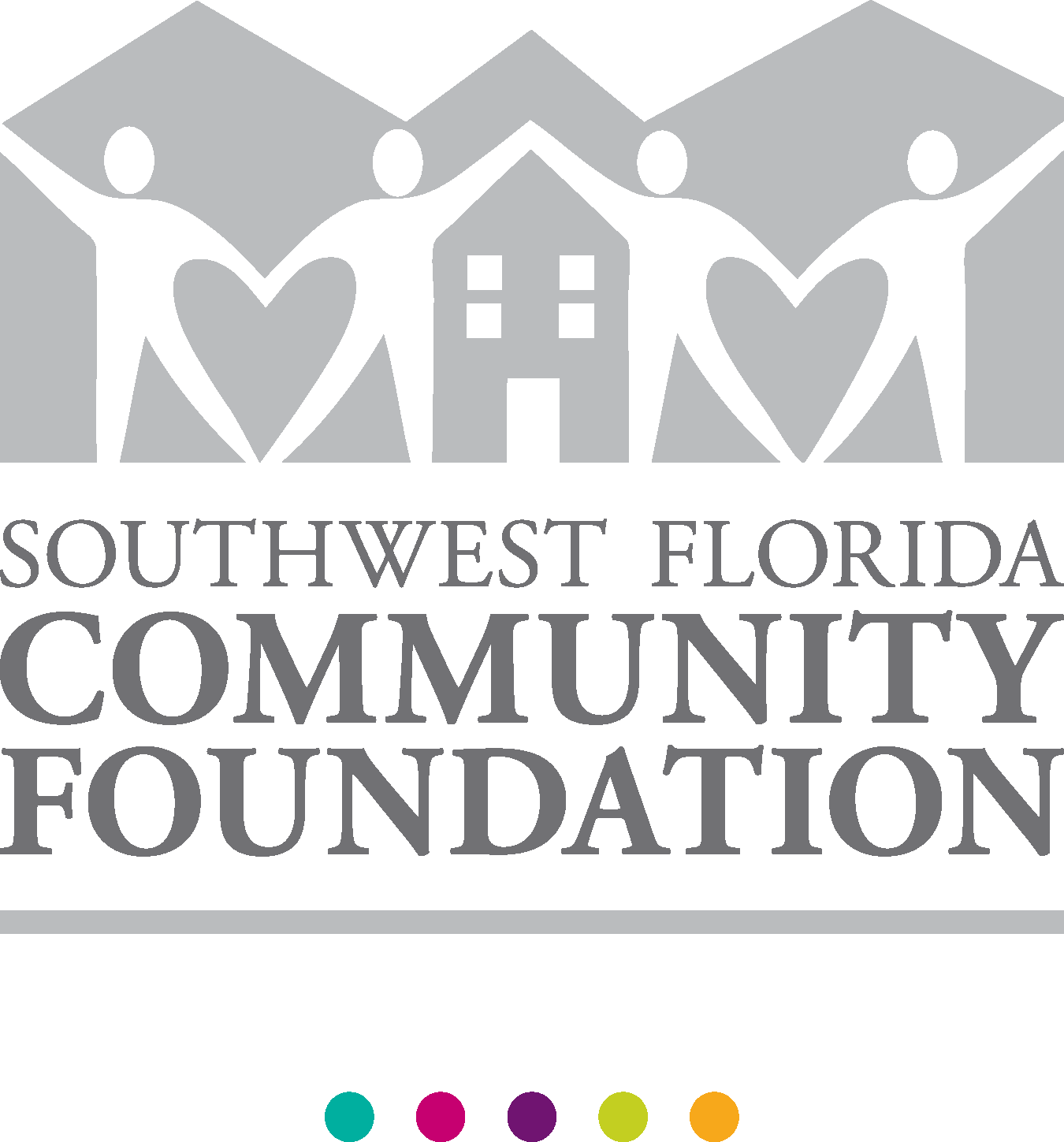Speaking Engagements UPCOMING
Predict and Prepare sponsored by Workday 12/16
PAST BUT AVAILABLE FOR REPLAY
The Bill Kutik Radio Show® #171, 2/15
The Bill Kutik Radio Show® #160, 8/14
The Bill Kutik Radio Show® #145, 1/14
Workday Predict and Prepare Webinar, 12/10/2013
The Bill Kutik Radio Show® #134, 8/13
CXOTalk: Naomi Bloom, Nenshad Bardoliwalla, and Michael Krigsman, 3/15/2013
Drive Thru HR, 12/17/12
The Bill Kutik Radio Show® #110, 8/12
Webinar Sponsored by Workday: "Follow the Yellow Brick Road to Business Value," 5/3/12 Audio/Whitepaper
Webinar Sponsored by Workday: "Predict and Prepare," 12/7/11
HR Happy Hour - Episode 118 - 'Work and the Future of Work', 9/23/11
The Bill Kutik Radio Show® #87, 9/11
Keynote, Connections Ultimate Partner Forum, 3/9-12/11
"Convergence in Bloom" Webcast and accompanying white paper, sponsored by ADP, 9/21/10
The Bill Kutik Radio Show® #63, 9/10
Keynote for Workforce Management's first ever virtual HR technology conference, 6/8/10
Knowledge Infusion Webinar, 6/3/10
Webinar Sponsored by Workday: "Predict and Prepare," 12/8/09
Webinar Sponsored by Workday: "Preparing to Lead the Recovery," 11/19/09 Audio/Powerpoint
"Enterprise unplugged: Riffing on failure and performance," a Michael Krigsman podcast 11/9/09
The Bill Kutik Radio Show® #39, 10/09
Workday SOR Webinar, 8/25/09
The Bill Kutik Radio Show® #15, 10/08
PAST BUT NO REPLAY AVAILABLE
Keynote, HR Tech Europe, Amsterdam, 10/25-26/12
Master Panel, HR Technology, Chicago, 10/9/012
Keynote, Workforce Magazine HR Tech Week, 6/6/12
Webcast Sponsored by Workday: "Building a Solid Business Case for HR Technology Change," 5/31/12
Keynote, Saba Global Summit, Miami, 3/19-22/12
Workday Rising, Las Vegas, 10/24-27/11
HR Technology, Las Vegas 10/3-5/11
HR Florida, Orlando 8/29-31/11
Boussias Communications HR Effectiveness Forum, Athens, Greece 6/16-17/11
HR Demo Show, Las Vegas 5/24-26/11
Workday Rising, 10/11/10
HRO Summit, 10/22/09
HR Technology, Keynote and Panel, 10/2/09
Adventures of Bloom & Wallace
|
 Auntie Mame — My Heroine Wrapping Up My Consulting Practice, Starting My Next Career Chapter
[For those of who got an early draft, please do read the final as I’ve updated it considerably based on your feedback and some late-breaking next chapter developments.]
One of my absolute favorite actresses of all time was Rosalind Russell. She died of breast cancer in 1976, so many of you may never have seen her during her career. She was amazing. Battling a number of health issues, including very painful arthritis, she achieved a body of work that makes the portfolio of most actresses, including the big names of today, pale by comparison. Drama or comedy, on stage or on screen, there was no one else like her — and no actress since has so captured my heart.
When she played the lead role in Patrick Dennis’ “Auntie Mame,” a movie I’ve watched at least a dozen times, she inspired me to be an Auntie Mame to now two generations of nieces and nephews rather than to emulate the more conventional women of the era, the women of my mother’s generation. And when her autobiography was published the year after she died, its title, one of the most memorable lines from “Auntie Mame,” became my words to live by: “life’s a banquet, and most poor suckers are starving.”
Those words, and what they really mean, have guided many of my life’s choices, including those of my professional life. Aim high, take a chance, be passionate about what you’re doing, work your butt off, savor the opportunities, and appreciate just how fortunate you are to have more options than most people will ever enjoy. All this and more are wrapped up for me not only in her autobiography’s title, but also in the story of her life. Here was a woman who stayed married to someone she really loved, managed a substantial career, lived with serious health issues, and knew when to adapt, when to let go, and when to move on. I’m no Rosalind Russell, but I’ve learned a lesson or two from her life. And I’m still learning.
I’ve been on the road pretty much since I began my professional career mid-1967. I’ve tried hard to stay current, to generate fresh ideas, to figure out where we’re going rather than just dwelling on where we’ve been, and to make sure that every hour committed to a client was the very best hour I could deliver. I’ve had an amazing run, accomplished much of what I set out to do when I founded my solo practice in 1987, and I’m pretty optimistic for at least some parts of our industry. But making every client hour your best hour requires staying on top of everything that’s happening globally across HRM and IT, and at their intersection. It means being on point from early AM to late PM. There’s simply no way to digest, analyze, develop a point of view and explain all of this as quickly as our always on/always commenting culture expects of anyone who holds themselves to my impossible standards. At least not without working and traveling at a truly killer pace. As for what we euphemistically call “thought leadership,” that takes large amounts of quiet time as well as lots of time spent learning. And “thought leadership” is central to the type of consulting that I have enjoyed most.
While all of this has been going on, I’ve been trying to have a life. Traveling for pleasure, sailing (now trawlering) with Ron, investing as much time as possible in relationships with family and friends, actively supporting the causes and philanthropies that are important to us, reading voraciously, loving live theater, and so much more — but with my work life always taking priority. Always! Like so many of you, my life’s journey is littered with missed family gatherings and important life events, as well as far too many “worcations” (my own invented term for vacations which were overtaken by work). And like you, I can’t remember a time when I didn’t feel torn among competing priorities or when I didn’t wish for longer days/weeks/months/years. But in the real world, we do not get longer years, or as many years of youthful invincibility as we would like.
 Life’s Banquet Awaits Me! And that brings me to “Naomi’s Next Career Chapter!” I always said that, when I no longer wanted to keep up that “killer” pace, to do what it takes to deliver every consulting hour to my own neurotically high standards, I would do something else — and so I am. With a huge thank you to all my clients and client teams, and to the many colleagues who have supported not only my consulting work but also my lifelong learning efforts, this consultant is ready to shift her priorities from flat-out, hands-on, workaholic consultant to industry observer, commentator, writer, speaker, mentor, moderator, facilitator, advocate, agent provocateur, strategic advisor and Board member.
Surely you didn’t expect me to walk away from the industry I’ve helped shape and the 24/7 career I’ve loved? Au contraire! But I do want to give myself the gift — and what a luxury that is — of entering 2014 (not to mention 2015) without having every minute booked a year in advance and a mile long todo list which will never get done. So while I’m keeping an open mind, here are some preliminary thoughts on the next chapter, on the types of opportunities that will fit:
- On the pro bono side, I’m honored to be a Fellow of the Human Resources Policy Institute at Boston University, and I have just agreed to take on a similar role for the Candidate Experience Awards. Closer to home, I’m working on an initiative to build a non-profit organization to deliver shared administrative services, and not just HR-related services, to our local non-profits so that more of their limited resources can be focused on their missions.
- I love writing and may well continue my blog, but if so it’s focus and mix of posts will likely broaden over time. Many would say that’s been happening almost from the beginning, and no one seems to mind, but I’d love to apply my growing interest in watercolors to illustrating some of those posts.
- Once I have time to breathe, and assuming I keep writing posts of interest, I’ll probably review the whole subject of blog sponsorships. While I was consulting across the industry, I didn’t feel comfortable taking sponsorships, but without those potential conflicts of interest, this deserves revisiting. If that’s something in which you’re interested, November would be a great time to contact me.
- As for compensated speaking/thought leadership engagements, I’ve done a fair number of keynote addresses in my time, along with a wide variety of panels/podcasts/Webinars/videocasts and whitepapers. I’m sure I’ll be just as selective in the future as I’ve been in the past, but I may well have the luxury of accepting more international opportunities. One type of compensated session that I won’t be doing, after this year’s HR Technology Conference and the European HR Technology Conference (please note that these are in no way related), has been a personal favorite: the open-ended, bring any question you want, “ask the expert” session, unless of course I’m allowed to bring some “expert” buddies along to help out the old broad.
- Perhaps most exciting are the opportunities to support directly vendors and products which I think are best-in-class. I’ve always been comfortable promoting ideas in which I believed and citing vendors and products which met or didn’t meet my take on these ideas. Now freed of the ecumenical responsibilities of a consulting practice, I’ll be looking more closely at strategic advisor and Board roles. Maybe it’s even time to introduce an InFullBloom HR technology badge.

I owe so much of what’s been accomplished these many years to the clients who believed in me and the client teams with whom I have worked. I’d love to thank every one of you again personally; I hope I did so properly at the time. Some of you, especially in the early years, took a great leap of faith when I came around with my strategic planning methodologies and software design models and architectural preferences. Since I got hooked on all of this at my very first job out of UPenn, I’ve done my best to advance the practice of HRM via the enablement of great technology. On balance, it’s been well worth the effort, and that effort will continue.
 Independence Day I don’t remember a time when there were so many revolutions (or whatever you choose to call them) happening around the world, so many uprisings of ordinary people against the behavior, policies, strictures, etc. of their governments. Yes, I know that some of these involve millennium-old sectarian or ethnic hostilities burbling to the surface as long-standing strong men lose their grip or are driven from same by foreign intervention. And some of are the result of countries, created out of thin air to meet the needs of colonial powers, which produced very strange bedfellows, not unlike some of the recent developments in our own industry :-)But whatever’s going on, let’s not forget that revolutions are messy, given to wild swings of popular opinion, and often needful of help from others at critical junctures in order to avoid the worst possible outcomes and perhaps, just perhaps, to arrive at more positive ones.
Our own revolution certainly was messy. We owe a great deal to the perhaps less than altruistic help we received from the French at a critical juncture. And our democracy, our efforts to “form a more perfect union,” remain a work in progress these hundreds of years later.
Today we celebrate our independence. We thank those who sacrificed and are sacrificing right now to protect us from “enemies, foreign and domestic.” But we also rail against our government, yell at one another over the really huge differences in how we see the issues of the day, and yes, we take to the streets to protest. It was street demonstrations and protests of every flavor that ended segregation, brought about many of the civil rights we hold dear, ended the war in Viet Nam. We’ve also taken to the streets to show our support for one another at times of crisis. And while most of our demonstrations and protests have been peaceful, and our laws support our rights of assembly, we all know that even here the line has been crossed, that violence has never been far away, and that civility has sometimes been lost to the anger of the crowd.
 Ms. Liberty Greeted My Grandparents Today’s world is far more complex than when we fought our own revolution and even more complex than when my generation was determined to integrate schools, increase civil rights, and end the war in Viet Nam. None of these messy, loud, in the streets demands for freedom and democracy and civil rights and so much more were played out on Twitter or YouTube. The whole world may have been watching these later events, but they were doing so via nightly news cycles with professional journalists not much given to hyperbole — unlike today’s infotainment and so-called news channels. I can just imagine with what histrionics CNN’s “Situation Room” would have reported the American Revolution.
Our Founding Fathers had the gift of time and privacy to debate and consider, write and rewrite, our Constitution and so much more. They were highly educated men — yes, all white, all men, all from similar backgrounds with similar educations — who gave us an amazing foundation by taking the road never travelled before in the creation of a new nation. Can you just imagine how difficult it would be to birth the USA now, in this always on/always connected/real-time world? I for one am very thankful, on this Independence Day, that we were lucky enough to have our own revolution under cover of primitive communications. With all of these points in mind, I’m prepared to cut those who would follow us into their own version of multi-cultural democracy a little slack.
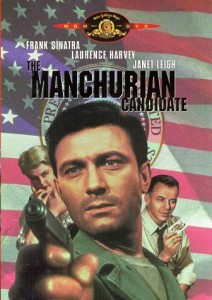 The Manchurian Candidate Goes Silicon Valley [Updated 6-30-2013 after having a little time to digest this week’s overload of Oracle deals and read/listen to many other perspectives. Whatever else may have been said by those much smarter and more in the loop than I am, it remains very clear that everyone involved in these deals is trying to shore up their own weaknesses without giving away the store and that, where NetSuite , Salesforce and their CEOs are concerned, the ties that bind them to Mr. Ellison and Oracle have always been and continue to be VERY substantial.]
After two intense days, a real geekfest with clients, and then catching up on the info tech happenings so far this week, I’m exhausted. Yes, we’re all buried in Oracle announcements, and it’s astonishing how wild is some of the coverage.
Oracle’s partnering with Microsoft is interesting (you’ll have to check out the relevant press releases, news conferences, etc. for yourselves as I’m racing to get this up and so skimping on the citations), but it has only moderate relevance to our neighborhood at the intersection of HRM and IT unless you’re an HR tech vendor making technology stack and/or cloud deployment choices.
[6-30-2013 — And if you are such a vendor, be very afraid of all these folks (Microsoft, Oracle, Salesforce and NetSuite) because they are in bed with Oracle’s Fusion HCM applications. Oracle wants to co-opt you as a partner or put you out of business, if not immediately then over time, across the middle to larger to global enterprise markets, public and private sector. Yes, although there’s so much going on here that has nothing to do with our little corner of the IT world, but this is a huge power play from a leader whose philosophy is domination.]
But Oracle partnering with Salesforce and further with NetSuite, and putting Fusion HCM front and center in both announcements, now that’s something that really catches our attention. So I’ve been reading the coverage, checking the jungle drums and actually contemplating all of this while trying to plan trips to Israel and India.
Across the coverage, here’s some of the livelier possibilities (summarized in my own words with a few opinions but definitely inspired by what I’ve read) that have been suggested:
- Has Salesforce thrown their ecosystem partners under the bus, and not just the obvious Workday, but also such vendors as Vana and Cornerstone OnDemand? [6-30-2013 — I do think that anyone who has built HR-related products on the Force.com platform, except for the lowest end of the market, will now be up directly against the Oracle Fusion HCM marketing and sales machine. I also think that Force.com will not be re-architected to add the effective-dating, effective-dated metadata framework, systemic applicability and a number of other InFullBloom architectural behaviors, for which some of their partners might have been hoping, in favor of encouraging use of the Oracle technology stack and development environment.]
- Has Salesforce effectively said that their own development platform, to which some very good in-house folks and an entire ecosystem of development partners have committed their careers, is no where near as good as what Oracle can give them? [6-30-2013 — see above.]
- Could this really be about Oracle taking over Salesforce as well as NetSuite (eventually — let’s not run afoul of regulatory or market queasiness on such a deal), meanwhile playing off against each other the putative hopes of those two CEOs of becoming Larry’s successor (with Larry laughing all the way into the richest of rich retirements)? [6-30-2013 — There are many ways to influence the competitive behavior of nominally independent partners, and it’s fair to say that Mr. Ellison’s “influence” over NetSuite has ensured, to this point, minimal direct competition between the firms and no badmouthing. I think we can now be confident that Salesforce will be influenced to “do no harm” to Oracle, which is going to be very difficult indeed. Every Workday deal, with Salesforce at least a mute reference as long as they’re running on it, does Oracle harm. Even worse, how does Salesforce continue to push their differentiators when their new best friend represents everything against which they’ve been differentiating. My guess is that Mr. Benioff will be under tremendous pressure to limit Workday’s footprint at Salesforce and, over time, to reduce it in favor of Fusion HCM applications. As to whether either or both firms eventually will be acquired, I think the answer is yes, but having an opinion on this is really above my pay grade.]
- Is this more about the usual infrastructure plays and much less about PaaS and applications? [6-30-2013 — I’m increasingly of the opinion, again above my pay grade, that the answer is a resounding yes. If the momentum toward non-SQL, non-Oracle, non-relational databases, propelled by their use in enterprise and consumer applications, were to continue, this is NOT good for Oracle’s historical competitive center, the so-called Red Stack. With these deals, Oracle moves to become a much more visible creator of Red Stack clouds, and that’s where the IT spending growth will be as in-house data centers continue to shrink at all but the very largest organizations.]
- Is this really about Oracle’s fear of Workday and/or SAP and a mega-effort to cut them off at the pass? [6-30-2013 — There are much bigger fish to fry here vis a vis Oracle’s play to be/remain the “arms dealer” to as much of the cloud as possible, but in our little corner of the enterprise technology landscape, the answer is yes, especially to Workday. With SAP, I think it’s more about the combination of running their on-premise and SaaS apps on HANA that has tweaked Oracle. So many of SAP’s customers do run today on Oracle that any significant movement there to HANA would hit Oracle where it hurts.]
- Has HANA so upset Larry’s view of what’s fair in love and database war that he’s determined to rid the planet of HANA by getting out in front with his own cloud and then in-memory alternatives? [6-30-2013 — yes.
- Are Marc and Zach, not unlike the Manchurian Candidate (not the remake but the original, in which a super scary Angela Lansbury played the Larry role), mere puppets whose early Oracle training was part of a many decades long plan for enterprise technology dominance (in all honesty, the Manchurian Candidate tie-in is entirely my own reaction as far as I know)? [6-3-2013 Of course I didn’t mean this literally, but there’s clearly a simpatico, perhaps built up from previous togetherness that has been unleashed.] or
- Is this just “cloud” cover for Oracle’s drubbing in the markets after a not great quarter, a lot of cloud action set in motion when Oracle realized that their current financial and business results would be disappointing? [6-30-2013 — I really don’t know how far in advance of announcing poor financial results a firm as well-managed as Oracle would have had a sense that things weren’t going as well as they’d like, but I do suspect that this week’s deals were more about addressing a broader and more strategic set of downward pressures on all the firms involved than about the exigencies of any one quarter’s results. That said, there was a slight flavor of these deals, which may well have been some time in the making, coming together quickly so as to distract attention from near-term business results. Whatever else was happening, all the firms involved but especially Oracle got far more coverage out of these announcements than they could have bought.]
 There’s been a ton of terrific coverage from bloggers/reporters at (and this is just a subset) EnterpriseIrregulars, Diginomica, ZDNet, Constellation, IDG, AllThingsD, Appirio, InfoWeek as well as from the financial press and individual bloggers, so I know you’ll find something for everyone in the many different views expressed. As for me, I’m just beginning to develop a point of view on what all of this means, but I’m sure we’ll understand these developments a lot better when they move from press releases and news conferences to actions on the ground. In the meantime, I’ll probably have nightmares again, something that happened after I saw the Manchurian Candidate when it opened in 1962. There’s been a ton of terrific coverage from bloggers/reporters at (and this is just a subset) EnterpriseIrregulars, Diginomica, ZDNet, Constellation, IDG, AllThingsD, Appirio, InfoWeek as well as from the financial press and individual bloggers, so I know you’ll find something for everyone in the many different views expressed. As for me, I’m just beginning to develop a point of view on what all of this means, but I’m sure we’ll understand these developments a lot better when they move from press releases and news conferences to actions on the ground. In the meantime, I’ll probably have nightmares again, something that happened after I saw the Manchurian Candidate when it opened in 1962.
[Full disclosure: Workday has been a recent client as have been several competitors, including Infor, ADP and Ceridian.]
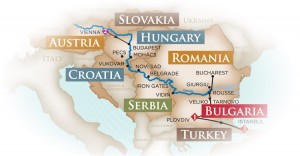 Istanbul Was Constantinople… Are you able to speak fluently a language other than your native one? Two such additional languages? Three? Four? Five? If you’re an American, you’re mostly answering no.
How many of my American colleagues/followers are able to deliver a quality professional presentation in a language other than their native one? To participate in a business meeting in a second language? A third? More? More nos?
And what about the senior executives of US-headquartered organizations? How many of them are comfortable conducting business in other than American English? Of even having a traveler’s basic grasp of two or three languages besides their native one? Yup, no again in most cases.
But ask those same questions of our European colleagues/followers, or those from many other parts of the world, and the answers would be quite different. The sad fact is that many of my American colleagues/followers haven’t even mastered proper American English, let alone a second or third major language. It makes me crazy when so-called educated Americans have only a limited grasp of grammar (which should include knowing when and how to use the subjunctive, my personal obsession) and of vocabulary (e.g. using incentivize when provide incentives works just fine or orientated rather than the already available oriented.)
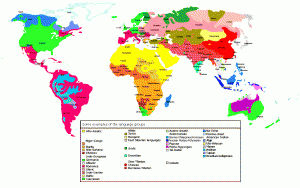 English May Dominate In Business, But Not In Everyday Life But this post isn’t about my personal language obsessions nor about the lack of multilingualism among my American colleagues/followers. Rather, it’s about the incredible demand for and availability of multilingual front-line staff we experienced in our travels. And I’ll use just two examples of wait staff to shame all of you who need it into expanding your language skills.
When our cruise was interrupted by the Danube floods, our boatload of passengers was bused to Budapest where we were booked into the Hilton at Castle Hill instead of staying on the ship as planned. Along with our group, the Hilton became a refuge for other disrupted travelers as well as their regularly scheduled tour groups. So at the fabulous buffet breakfast the next morning, there were a dozen or more languages being spoken by the guests, and Hilton managed to have at least one wait staff person on hand who could speak every needed language. Many of the (mostly young) women wait staff spoke three or more languages — I heard them because I was being nosy! — and did so with at least enough facility to make themselves understood and to understand their guests. Clearly language KSAOCs are a big deal at the Hilton Budapest, and scheduling the right language KSAOCs for that day’s mix of guest languages without having more wait staff than are needed depends on have a highly multilingual wait staff on call.
But the Budapest Hilton was not an outlier. In Vienna, we stayed at the Intercontinental, and I observed the same phenomenon. At both breakfast and dinner, I couldn’t help but notice young women wait staff (not the highest paid job and certainly not one that, in the US, usually demands heavy duty language KSAOCs), early twenties at most, moving from German (their local language) to English (for us) to French, Spanish, and even some of the Cyrillic languages, which we found impossible even to pronounce. So impressed was I by this facility, that I “interviewed” one young woman about the requirements for getting a wait staff job, and not just at a major hotel, in Vienna. “Well, you must speak English, of course, and at least two other non-German languages, ideally one oriental one.” Right! Very sobering to know that I wouldn’t qualify for a wait staff position in Vienna.
So what’s my point? Our European colleagues and their educational systems have a huge leg up on the US when it comes to preparing their young people for a global economy. Ordinary young people are learning English, Chinese, and more from the earliest years of primary education, and language education is both expected and accomplished. Is that true for their American counterparts? Growing up in the 50’s and early 60’s, we studied Latin or Greek (required to get a college prep diploma) for at least two years plus a Romance language (which were a much bigger deal then) for at least four, and the best universities required this. Clearly that’s not the case today, and more’s the pity.
Learning another language early in life, as I did (to be sure, they were Yiddish and English), develops a facility for learning more languages as you go along. But it also improves a range of cognitive KSAOCs as well as our ability to think more globally. For example, in Spanish one says “to take” a decision rather than the English “to make” a decision, and this difference in language reveals a difference in culture and the way in which people think about collaboration and about arriving at a decision. Yes, it was sobering to know that I couldn’t qualify as a wait staffer in Budapest or Vienna. Could you?
 Istanbul Was Constantinople… In my first update from this amazing trip, I highlighted what we saw as outstanding performance by the concierge at The Ritz Carlton Istanbul in rescuing us when we got caught in the violent Taksim Park protests at the start of our vacation. But the logistics of that rescue were small potatoes compared with the logistical challenges faced by and stepped up to by AMAWaterways when their entire European river cruising business (and that of every other river cruising company plying these waters) was disrupted by raging floods across Central Europe. As I’ve said many times, you can recognize great HRM in the behavior and performance of front line staff, and AMA’s front line staff performed magnificently in the face of Mother Nature’s fury.
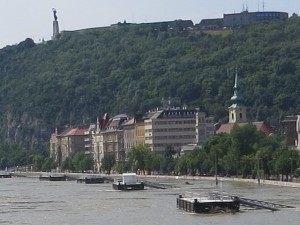 Budapest’s river boat docks, frontage roads and more were under water. We learned about the flooding very early in our journey, and I was following developments online, but our Captain and onboard cruise manager also kept us very well-informed. They said, early on, that they would let us know if there might be any changes to our itinerary as a result of the flooding, but this developing story moved very quickly from “might be” to “would be” changes. Upstream from us on the Danube, lots of river cruises were being disrupted and/or cancelled, and then it was our turn.
We were supposed to stay on the AmaCerto until we reached Budapest, but Budapest’s docks and surrounding streets were going to be too much under water, from the worst Danube flooding in 400+ years, for us to dock there safely. And as we saw when we got to Budapest, where many ships were stranded, they were so surrounded by water that the only access to them was by dinghy. And many of those cruise ships were still there as I’m writing this because of the lost dockage and lack of clearance under the many bridges.
Our ship’s captain didn’t want to take AmaCerto any closer to Budapest than the last major docking site he knew to be safe — so Novi Sad in Serbia — and safety first is what’s expected from the Captain. But with many different groups on board, all with different plans once we had reached Budapest, and with some of them expecting to continue upstream on AmaCerto past Budapest and on to Prague and beyond, that one decision — secure the ship at Novi Sad — had tons of ripple effects. And that’s when great HRM really matters.
Enter an amazing cruise manager, Sebastien Leroy, a responsive and capable headquarters staff (and keep in mind that we were only one of dozens of AMA ships whose itinerary and that of their passengers were being disrupted at exactly the same time), and an onboard crew who rose to the occasion. For AmaCerto, the decision was made that we would do our scheduled Belgrade touring, then go on to Novi Sad in Serbia where we’d end the cruise portion of our trip. After a day of touring there, and I truly loved Novi Sad, plans were made (so tour buses and tour guides engaged on zero notice, AMA cruise managers on leave flown in from all over the world, hotel accommodations arranged, group meals ashore planned, etc. etc.) for us to do an overland bus trip to Budapest (with touring and a great lunch stop along the way), stay one night in Budapest (where they cleared the Hilton on very short notice for a large group of us with another group going to another hotel), enjoy associated touring and an evening event, and then continue on with our planned extension program to Vienna. And did I mention that Sebastien was doing a good bit of this rearranging while we were in the Iron Gorges of the Danube, a truly wild area where not even satellite-based wifi did more than provide sporadic bursts.
No big deal in terms of changes for us, but lots of changes for other members of our cruise’s guest list, and I have to give a major shout-out to AMAWaterways for taking great care of all these changes in their plans. One such guest, an amazing senior (and you know that’s anyone 80+ since 60 is the new 40) from Australia traveling on her own, had planned an extension tour of Turkey, so all of her intermediate plans had to be remade — and AMA handled their end of this beautifully. I’m hoping that her travel agency, which had planned her independent travel after the cruise, did as good a job.
Those of us in the enterprise software business know full well how difficult it is, in the middle of a go-live end-user implementation or vendor product release, to have to make a major change in the software at the last minute. Ripple effects, unforeseen consequences, disrupted workforce schedules, communications challenges, and so much more must be handled quickly and correctly lest the end result be dissatisfied customers, many to most of whom are communicating online with friends/family/colleagues about every little bump in the road. Great project managers know that they must build up a vast reservoir of positive karma, of great relationships with colleagues across the organization, so that they’ve got chips to call in when all hell breaks loose. And great HRM is the enabling fabric which holds an organization together and lets it perform well under those conditions.
Watching the AMA AmaCerto team, and especially our cruise manager Sebastien, work through all the changes, get everyone going in the right but new direction, not lose any luggage or passengers or tempers in spite of several nearly all-nighters, I was reminded of the best project teams of which I’ve ever been a part. And I know that we’d have had a much less positive experience with such a major disruption if AMA didn’t do HRM well every day. The proof of their HRM policies was in how the entire crew of AmaCerto worked together to minimize the impact of the Danube floods, clearly beyond their control, on all of us. And it was clear that our cruise manager, ship’s captain and ship’s hotel manager had built up enough karma to make it all happen.
 Yahrzeit Candle [When I wrote this for Father’s Day 2010, I never planned to update and then reprise this post annually. But as each Father’s Day approaches, my sense of loss increases. I so wish he were still here to share with me and my sister the laughter and tears of everyday living. Ron and I have large paintings of our two fathers above a bespoke archway in our home, and they are very much with us in spirit. They lived at opposite ends of the country, could not have come from more different backgrounds, and they only met a couple of times in their lives. But I know they would be very happy playing pinochel with each other wherever they may be now.]
From my Dad I inherited:
- his ability to tell a good story, to make a point while making you laugh;
- his commitment to active friendship, the kind of friendship that does what you need even when you don’t know you need it;
- his belief that any day on which you wake up is already a good day, that the gift of life is too precious to waste; and
- his habits of meticulous book-keeping, calendar-keeping, and commitment-keeping.
From my Dad I also inherited his love of reading and the sheer joy of opening a new book. Later I discovered that for me, being rich meant being able to buy any book I wanted to read and never having to browse in second-hand bookshops unless I was looking for treasure. Jewish families like ours, in the early 50′s, bought their children a copy of the World Book Encyclopedia, one volume at a time on a payment plan that they could scarcely afford, so that their children would be better educated than they were. I remember my Dad reading that encyclopedia cover to cover, Aardvark to Zebra, even the boring bits (and there were many such), and perhaps that’s where I also learned that reading some books was about more than having the pleasure of meeting their words.
My Dad taught me to swim almost before I could walk by carrying me on his back as he swam from the gentle shores of White Sands Beach, CT to the floating raft in the waters of Long Island Sound. I’ve loved swimming and being in/around the water ever since. I have no fear of the ocean’s waves and can still feel his support whenever I’m over my head. But I can also remember his advice when it came to swimming in open, choppy water: “keep your mouth closed.” Words to live by in many situations.
We buried my Dad on my 50th birthday. He spent just a few days in hospital, having not been ill before his unexpected collapse just as I was about to deliver a presentation at the 1995 SAPPHIRE conference in Phoenix. My Dad was a perfectly ordinary man to whose funeral came many hundreds of people we didn’t know whom he had helped, quietly, without ever being asked. In his retirement, he had “adopted” older members of our synagogue who needed rides to doctors’ appointments, help paying their bills, or just an hour’s companionship. Without the financial means of major philanthopy, he found the means for active philanthropy, through the gift of his own time and caring.
By the time I launched my own business in 1987, the cost of long distance calls, so daunting when I first left home in ’63, were much more affordable, and I called him most days in the late afternoon even when I was onsite with clients (which was most of the time in those early days). Those calls always started with:
- Dad: How’s business?
- Naomi: Business is great.
- Dad: Are your clients paying their bills on time?
- Naomi: Yes, they sure are.
- Dad: Are their checks clearing the bank?
- Naomi: Absolutely.
When you know that those early clients were firms like Bank of America, Hewlett Packard and International Paper, something my Dad certainly knew, this ritual opening to our calls goes from being merely odd to very odd, unless you also know that being a small retailer all his life shaped forever my Dad’s view of Accounts Receivable. From there we’d go on to the events of his and my day, and to what was happening across the Bloom family and the larger Jewish community in which I grew up. I don’t remember my Dad ever calling me — long distance calls were for emergencies only among his generation — but I know he loved my calls because he reported on them to the group of men with whom he ate breakfast every day at a local deli.
I’ve always said yahrzeit for my Dad at the appropriate times in our Jewish calendar, and I think of him every day, but I miss him especially on Father’s Day. If you’re lucky enough to still have your Dad, don’t wait for Father’s Day to call him. And if you are a Dad, the gift of your time, of your self, is so much more important than anything you could ever buy with your money.
 Istanbul Was Constantinople…  From Our Hotel Window — Police Car Set Afire There’s an old sailor’s expression that “anyone can man the helm when the seas are calm.” More than just in boating, this observation describes so many aspects of our work and personal lives. When everything is going along as planned, when we’re not thrown any curve balls, when G-d doesn’t decide to laugh in our faces, then many to most of us are quite able to function in a reasonable way. But when all hell breaks loose, that’s when you see what people are made of and, when it breaks loose for a business, the difference between ordinary HRM and excellent HRM really shows. This wonderful vacation has called for great HRM at The Ritz Carlton Istanbul and aboard our AMAWaterways ship AmaCerto, and both of these organizations rose to the occasion. But let’s start at the beginning.
How do all adventures begin? Not with an announcement, but the traffic congestion in from the Istanbul airport should have been a clue. However, little did we suspect on Wednesday, 5/29, that our traffic delays getting to the Ritz Carlton (which just happened to be located near Taksim Park) were related to a small protest over the future of that park. We had come a day early to Istanbul, a day before the start of our planned touring with AMAWaterways (which had booked us into the Ritz Carlton as part of that touring), in order to spend Thursday, 5/30, doing a full day of private touring of the Jewish heritage sights of Istanbul.
Orguz, our amazing guide secured through Society of Travel, was the best. We saw everything, learned about every phase of Istanbul history, and were welcomed by several synagogues and Jewish museums on visits approved in advance with the Chief Rabbi. We also visited Süleymaniye Mosque, which is gorgeous, and we were so encouraged to see the great multiculturalism of this vibrant world city. It is common here to see a mosque, church and synagogue within the same small neighborhood, which makes sense since we’re all sharing the same G-d.
Friday morning, 5/31, Ron and my brother-in-law Irwin did the five mile walking tour of Topkapi Palace while I did some writing and Marsha some reading. In the afternoon, again as a private tour with Orguz, we boarded a wonderful cruiser, about the size of our own boat, and toured all of Istanbul from the Bosphorus. What an amazing way to see both the European and Asian sides of this city, and we all picked out the waterfront houses we wanted should we win the lottery. The boat’s captain, with a mildly concerned look on his face, gave me the wheel and then relaxed visibly when he saw that this was not my first time as helmsman. Still, I was very glad to relinquish command when ferries, tankers, and container ships etc. all converged on our course. Truly the calm before the storm.
All travel is adventure travel. May Day riots in Paris? Been there. Anti-austerity take over of the main square in Athens? Yup! Save Istanbul’s Taksim Park from rapacious developers and heavy handed government? It was all happening just a short walk from our hotel. The outside terrace where we dined our first night in Istanbul was a new experience for Ron, my sister Marsha and Irwin, none of whom had ever experienced tear gas before, when it drifted our way. We never missed a beat and just kept on with our dinner. For me, this brought back memories of my anti-war marches of the 60’s, but there’s nothing I wanted to remember about police in riot gear firing tear gas and using water cannons on their own citizens. All evening and well into the night we could hear the sounds of the clashes between police and protestors, but Saturday morning dawned nice and quiet.
And with Saturday came our planned expedition to the Grand Bazaar. I led that tour, for which my only goal was to get everyone out without having bought everything in sight. There are a reported 3300 shops under one roof, so that was quite a challenge. There were lots of police checkpoints around our hotel, because of the nearby protests, including one right outside, but we’re not easily deterred when there’s shopping to do. And the Grand Bazaar of Istanbul is like Aladdin’s Cave, complete with the most interesting shopkeepers you’ll ever meet. We all had a great time.
But when it was time to take a taxi back to our hotel, things got interesting. Our first taxi driver ran out of gas. Our second taxi driver ran out of nerve (as in became truly hysterical) when, headed to our hotel which was located very close to the center of the demonstrations, we suddenly found ourselves trapped between police shooting tear gas grenades and protesters putting up barricades of rubble across the road in front of us — literally in front of us. When they saw that we were befuddled Americans, the protesters helped our driver to back up and take another alley, but he was so unnerved that he refused to go any farther and just wanted us out of his cab. Now this might not have been so scary in a country whose language we speak, but we don’t know squat in Turkish, especially when everyone is screaming. So, we got out of his taxi, and with help from a businessman who spoke some English, we found another taxi who would take us back to the old city, away from the protests (and our hotel), and we took refuge in the Four Seasons.
I asked (tipping everyone in sight) the Four Seasons concierge to arrange a way for us to get back to our hotel while we had lunch, and he did. Between the concierge at the Ritz Carlton, and the concierge at the Four Seasons, they arranged a rescue mission with private car and driver. Suddenly, we were told we needed to go — NOW! So we left in a hurry, and our driver got us back to the Ritz through assembling protestors, mustering police, etc. Another few minutes, and we could never have reached our hotel. From our room we could see literally a sea of humanity marching up the hill on which sits the Ritz, police pulling back, barricades being built and fires set by the protestors. What a night. And nothing we’ll forget any time soon.
But the Ritz Carlton, and especially their young female concierge, deserve a major shout-out for rescuing not only us but many others from our tour group and not charging any of us for that service. That’s right; no charge. Yeah Ritz Carlton! And let’s hear it for great HRM at the Ritz Carlton for nurturing an empowered and very capable concierge who handled everything quickly and calmly. HRM is everywhere, and the best evidence of great vs okay vs lousy HRM is in the behavior of front-line employees. I’m sure some tech was involved, but the heart of HRM isn’t automation or procedure; it’s capable people, who know their jobs, and are trusted by their leaders to do those jobs well.
Next up: flooding on the Danube, disrupted river cruise operations, and the superb HRM at AMAWaterways.
 Istanbul Was Constantinople… Ron and I will be traveling from 5/28/2013 through 6/13/2013 from Istanbul to Vienna (note: the route on the map shows the opposite direction), soaking up “best” practices in HRM, the HRM delivery system and HR technology every step of the way. I’ll be doing some tweeting from “the road,” @InFullBloomUS, but I may not have time to blog very much. And for all the 2nd story men reading this blog, our life sitter will be in residence while we’re on the road, as always. You don’t want to mess with her FELLA.
To get into the right mood for this trip, I’ve been singing my favorite Istanbul song, a great rendition of which is here. The lyrics are below in case you’d like to sing along. With so many new (at least for us) countries on our itinerary (although we’ve been to Istanbul, Budapest and Vienna once before), I tried to learn to say hello, please and thank you in every language we’ll encounter — but that effort’s been a flop so far. None of these languages appear to have Latin roots, nor Hebrew ones for that matter, so I’m flat out of luck. Not a big problem since my sister, with whom we’ll be traveling along with her husband, does not find a lack of local language any barrier to complete bonding with total strangers.
Did you ever wonder how bath attendants in Turkey are licensed? What TOTAL COMPENSATION PLANs are used, not to mention what KSAOC profiles, EMPLOYEE engagement techniques and workforce development programs, to achieve shipboard perfection in service levels on Danube river boats? Are you concerned about how Bulgarian employers view Romanian employees? Or how Serbians view Croatians? What about the distinct or not HRM approaches/issues in all the countries along the Danube that we’ll be visiting? I can’t promise that I’ll return with the definitive answers to these or any other questions, but I certainly hope to be carrying a lifetime’s worth of travel memories. And the best part of this trip will be some quality time with The Wallace. Can you even imagine what he has to put up with on a day-to-day basis? “Talk” to you from the road.
[Postscript: If you would like to review our first trip to Istanbul in 2010, and our travels from there to Venice, these three posts are for you. Lots of great HRM observations along that route reported for your pleasure.]
http://www.youtube.com/watch?v=G779UlpGQ3U
Istanbul was Constantinople
Now it’s Istanbul, not Constantinople
Been a long time gone, Constantinople
Now it’s Turkish delight on a moonlit night
Every gal in Constantinople
Lives in Istanbul, not Constantinople
So if you’ve a date in Constantinople
She’ll be waiting in Istanbul
Even old New York was once New Amsterdam
Why they changed it I can’t say
People just liked it better that way
So take me back to Constantinople
No, you can’t go back to Constantinople
Been a long time gone, Constantinople
Why did Constantinople get the works?
That’s nobody’s business but the Turks
Istanbul (Istanbul)
Istanbul (Istanbul)
Even old New York was once New Amsterdam
Why they changed it I can’t say
People just liked it better that way
Istanbul was Constantinople
Now it’s Istanbul, not Constantinople
Been a long time gone, Constantinople
Why did Constantinople get the works?
That’s nobody’s business but the Turks
So take me back to Constantinople
No, you can’t go back to Constantinople
Been a long time gone, Constantinople
Why did Constantinople get the works?
That’s nobody’s business but the Turks
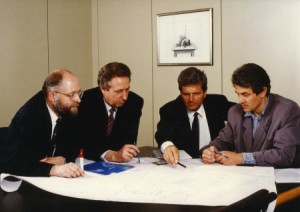 SAP Founders 1988 — Klaus Tschira On The Left [Full disclosure: SAP has not been a client in many years, and then my work with them was quite limited.]
I’ve always had a warm spot in my heart for SAP. When I published my first (and thus far only) 700+ page book in 1994 (“Human Resource Management and Information Technology: Achieving A Strategy Partnership”), Klaus Tschira, one of SAP’s founders, became a big fan of my work, and me of his.
Early on, Klaus understood and believed in the power of object models and object-oriented development as well as in the importance of strategic HRM (so going a lot further than merely administrative improvements in HRM), and he translated those views into SAP’s HCM products over the many years that he led HCM product strategy and development. Our friendship started because we were simpatico when it came to enterprise software.
But it was while I was in Phoenix in 1995 to speak at SAPPHIRE that I saw Klaus’ great humanity. My father collapsed while I was at SAPPHIRE, and I raced home to be with him. Klaus gave my presentation for me, making sure that I didn’t feel I was dropping the ball on him and SAP, for which I always will be grateful. My Dad never regained consciousness, but I was with him and able to support my sister and Mom through the difficult end-of-life decisions facing us — and to do so without any professional guilt. So, even when I’m being critical of some aspect of SAP’s products, leadership, business practices, etc., I’m rooting for their survival and success.
Therefore, amidst all the discussion yesterday about the latest major organizational changes at SAP (and there have been many such over the years I’ve been following SAP), I kept looking for the silver lining. No surprise that Lars decided to leave as many had predicted this. And no surprise that SAP is betting on HANA; what else should they do? Sad that their track record with HR leaders is so poor, but it’s even sadder that there are no highly visible women in SAP’s executive ranks. But what really troubled me was that, not only via SAP’s own communications but also across the twitterverse and blogosphere, there was very little discussion of what SAP really needs to do in order to restore this giant of the last generation of business applications to being a successful competitor for the next generation. And while I tweeted my thoughts on this yesterday, I felt they deserved a blog post of their own.
I believe that SAP needs a coherent and comprehensive next generation true SaaS applications strategy across all their product domains, and then to have delivered on this yesterday. And since delivery yesterday isn’t possible, then they need to deliver on this at the earliest possible moment. While innovative development platforms and databases are powerful and potentially disruptive, applications since run the world, now with embedded analytics, mobile delivery, built-in collaboration and social everything, and the speed of in-memory to unleash the predictive analytics which are our collective future. So, as SAP’s huge installed base of on-premise customers, but more importantly customers lacking the needed applications foundations for success in the 21st century, make the move to true SaaS (or more specifically to SaaS InFullBloom) in order to reap the significant business benefits of doing so, SAP must be ready to compete again for every single one of these customers.
Once upon a time, Business ByDesign was supposed to be that next generation, but that doesn’t seem to have panned out, and ByD has been relegated to the lower end of the market after much architectural reworking and without a very strong HRMS/TM capability. And then, after buying the very expensive SuccessFactors, we were told that SAP’s next generation true SaaS offering would be some combination of SuccessFactors for TM, a greatly upgraded and rearchitected Employee Central (and the metadata framework thus introduced is a very good start) for HRMS, a hosted rendition of SAP’s workhorse global payroll (now rebranded “cloud” payroll), some extrapolation of ByD’s financials and many more bits and pieces that lay well beyond my areas of expertise. But in my opinion, that’s not good enough. SAP’s customers, and SAP itself, deserve a lot more.
I think it’s time for SAP to pick an architecture, development platform, database, object models and everything else that’s needed in the foundation and then to bring to market a whole new applications suite. If HANA is that architecture, development platform, database and more of the needed foundation, that would be terrific. But even if that’s true, even if everything else we need as to effective-dating, inheritance, security, etc. etc. is contained within HANA, even if HANA provides a fully models-driven, metadata-rich, definitional development environment, there’s still a lot of heavy lifting needed to develop next generation object models across all the applications domains served by SAP. And then those next generation applications must be reincarnated or built fresh on top of those object models within HANA.
That sounds like a ton of work, so I’m hoping that much of this is already done and just needs some pulling together. But wherever SAP is on the road to fulfilling the next generation dreams of their current customers and of the market, there’s not a moment to lose. As for me, I’m hoping yesterday’s organizational changes make this happen ASAP.
[Many of you know that my husband, Ron Wallace, was a mission manager at NASA for international Search and Rescue Programs (official program name COSPAS/SARSAT) until he took early retirement in 1999 so that we could relocate to our present home in Fort Myers, FL. We were both fascinated by all things spacey, and continue to be, so I’ve been using the mission control analogy in my work with HRM analytics since I began that work in 1987. I should also mention that this post was inspired by a presentation I gave on 5-9-2013 to the Human Resource Policy Institute, of which I’m a Fellow, which is hosted at Boston University’s School of Management, of which I’m coincidentally an MBA graduate, class of ’72.]
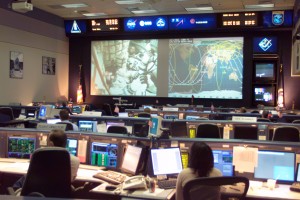 NASA Mission Control Given our goal of driving positive business and/or mission outcomes via effective HRM, we are faced with three primary issues in developing our analytics program. In the order in which we must figure them out, they are:
- By what metrics will senior leadership know how HRM is impacting those results? How will be prove the hypothesized line of sight between specific HRM policies/programs/practices/plans and specific organizational outcomes?
- What analytics should be embedded in what HRM processes to bring about what improvements in what decisions by what organizational roles to drive those organizational outcomes? And what analytics should be used by which HR partners and specialists to shape those HRM policies, practices, plans, processes etc. toward that end?
- How do we avoid drowning in more analytics than we can absorb and upon which we can act? How can we organize the important analytics to ensure that they are presented to the right people and used effectively to drive results?
All too often, efforts to infuse HRM decision-making and shape the design of HRM programs/policies/practices/etc. with analytics begin with the obvious and easily measured rather than with the important and necessary to measure aspects of our business. Yes, it’s helpful to know how many “paychecks” were “cut” in a cycle (forgive me for using the lingo of your youth — in mine it was still pay envelopes filled with cash), but it’s a lot more important to driving business outcomes to know if our scarce compensation dollars are eliciting the desired behavioral results.
Figuring out what those more valuable analytics may be and then delivering them, just in time, to the right decision makers goes to the heart of effective analytics programs. If we’re not willing or able to do the heavy lifting here, we might as well go back to counting performance reviews completed on time (that’s always assuming that we haven’t nuked the traditional review in favor of a much more ongoing and social performance process) rather than trying to determine how to hire, grow and retain great performers. But assuming that we’re all serious about the strategic use of HRM analytics, let’s start tackling those issues.
Issue #1 — By what metrics will senior leadership know how HRM is impacting those results?
To figure this out, we must follow the Yellow Brick Road of strategic HRM planning. I’ve included links below to my four part blog post on my strategic HRM and HR technology planning methodology, and there is also a Webinar and whitepaper on Workday’s site www.workday.com if you’d like more information. But to summarize the thought process, it’s:
- What is the organization’s raison d’etre?
- What is the organization’s value proposition to its customers, shareholders and employees?
- What does the organization want to do and be?
- Why should shareholders, customers, employees, etc. invest their resources in the organization?
- What are the organization’s drivers of business value?
- By what measures and target values over what time period would we recognize achievement of this vision and the creation/achievement of business value?
- What must the organization do well to achieve its vision? To meet stakeholder expectations? By what strategies will the organization drive customer satisfaction, shareholder value and workforce effectiveness?
- How will the organization recognize, via objective measures and target values within a defined time frame, to what extent its organizational business strategies and needed results are being achieved?
- What must the HRM business (led by the HR function) do well to enable the organization to achieve its vision? By what HRM business strategies will the HRM business enable the organizational business strategies, i.e. help drive customer satisfaction, shareholder value, and workforce effectiveness?
- How will the organization recognize, via objective measures within a defined time frame, to what extent its HRM business strategies are achieving the intended results?
- By what measures and target values within a defined time frame will the organization’s progress toward its HRM business strategies and results be validated and/or problem areas revealed?
From the drivers of business and/or mission outcomes to HRM strategies that impact those drivers to the metrics that measure the effectiveness of those HRM strategies, this groundwork must be laid during strategic planning if we’re going to develop an effective program in strategic analytics. One great almost universal (at least in the for profit world) example of such a strategic metric is the growth (or retrenchment) in revenue and/or profitability (or similar) per workforce FTE, where you:
- include in workforce FTEs both employees and contingent workers as appropriate; and
- use as a denominator the best/most appropriate measure in your industry for business and/or mission outcomes.
Other good possibilities include measures of improvement in specific drivers of business and/or mission outcomes, e.g.:
- time-to-market and/or cost-to-market for new products, perhaps divided by the investment in specific HRM strategies intended to effect that improvement; paired with the
- utilization and outcomes of an incentive compensation plan focused on improving the effectiveness of the people and teams in the relevant roles.
Issue #2 — What analytics should be embedded in what HRM processes to effect what improvements in what decisions by what roles to drive results?
To address this issue, and to build the metrics “starter kit” that has been a part of my no longer licensed HRM object model/architectural “starter kit,” I developed Naomi’s hierarchy of metrics. Like Maslow’s much more famous (and deservedly so) hierarchy, mine starts with the more easily accomplished metrics (which also are much less valuable strategically, unlike Maslow’s foundational needs) and moves upward toward the really important, one might say critical, but very difficult to achieve metrics. And while I urge clients to avoid getting into analysis paralysis determining where a particular metric fits, I did develop definitions for what goes where. However, to keep this post from becoming a tome, I’ve just used a couple of examples to give you a flavor of each level, from lowest to highest, in the hierarchy.
HRM process activity metrics:
- How many expressions of interest came through our corporate career site?
- How many performance reviews were conducted?
HRM process outcome metrics:
- How many expressions of interest came through our corporate career site which passed our automated filters?
- How many performance reviews were conducted which were mechanically complete and completed on
HRM process activity pattern recognition metrics:
- How many expressions of interest which came through our corporate career site and passed our automated filters resulted from employee referrals?
- How many performance reviews were conducted which were mechanically complete and completed on time were conducted by managers with greater than 3 years experience and an excellent rating as managers?
HRM process outcome pattern recognition metrics:
- How many expressions of interest came through our corporate career site and passed our automated filters that resulted from employee referrals then passed our initial interview screenings?
- How many performance reviews were conducted which were mechanically complete and completed on
HRM process activity and outcome prediction metrics:
- What are the characteristics of those who express interest in employment via our career Web site which are predictors of successful employment? Of long term success in our organization?
- What are the characteristics of managers who coach/lead/extract better on average performance from their teams? How could we recognize pre-hire and/or cultivate post-hire those characteristics?
Issue #3 — How do we avoid drowning in more analytics than we can absorb/act upon?
Every metric or analytic, no matter how obvious and well-established, must be (subject to effective-dated, role-based security — but of course you knew that):
- surrounded with context, explanation and guidance;
- presented with the capability to drill down and drill around;
- actionable and configurable; and
- organized via what I call dashboards, cockpits and mission control.
Context, explanation and guidance should include at least:
- how is this metric derived? what does the value in this metric mean?
- what types of responses, corrective or other actions are expected, and with what downstream implications?
- what other information should I look at, including other metrics, to dig deeper into this matter? and
- who in the organization has greater experience in this matter upon which I may want to draw?
Drill down and drill around should include at least:
- show me the algorithm and values used to drive this metric;
- show me more about the people/positions/plans/etc. which are at the heart of or affected by this metric;
- show me how this metric applied to these people/positions/plans/etc. compares to the same metric applied to others; and
- show me what actions on my part have impacted/could impact in the future this metric.
Making metrics/analytics actionable means:
- now that I know what happened and why, let me make decisions, change business rules, undertake specific actions on the people, positions, plans, etc. the doing of which are intended to improve the outcomes; and
- now that I see the impact of previous actions and decisions on current results, let me propose future actions and decisions intended to improve the outcomes and show me the likely impacts provisionally so that I can then decide whether or not to take the proposed actions and decisions.
Dashboards, Cockpits, And “Mission Control”
Dashboards are for everyone — managers, employees, applicants, contingent workers, everyone. They contain what each person, depending on their role (again, subject to effective-dated, role-based security), needs to know delivered “point of sale,” including both overall organizational and local progress as well as progress toward that role’s needed outcomes. Dashboards don’t require any real training beyond knowing the basic navigation features of the software; they take full advantage of all that context, explanation, guidance, drill down, drill around, etc. Dashboards are also limited to those types of actions and configurations the doing of which have a limited scope of direct consequences in case of an error (but with lots of embedded intelligence to guide user to correct transactions, decisions and responses). Finally, only obvious actions are expected by dashboard users, and they’re reminded until they take them or, in critical cases, prevented from moving until we take them.
If you rent cars at all, you know that you expect to jump in and drive off without agonizing over where the fuel gauge or speedometer might be. But you also expect that, every now and then, the automobile industry goes through a major technology and dashboard redesign process, and then you do have to get with the program even if change is painful (as it certainly is to me) to learn how the new dashboard works. I personally fancy one that talks to me about its innermost feelings (i.e. the status of its fuel, tires, fluids, whatever) before those things get out of whack.
So what do strategic HRM dashboards contain? Here are just a few examples of what might be important for all employees (but not necessarily for contingent workers or applicants):
- business and/or mission outcomes — targets and progress toward them;
- growth in revenue and/or profitability or similar per workforce FTE;
- improvement in specific drivers of business and/or mission outcomes, e.g. time-to-market/cost-to-market of new products, divided by the investment in specific HRM strategies intended to effect that improvement;
- incentive compensation plan and/or workforce development program focused on improving the effectiveness of the people and teams in the relevant roles.
Here’s another example focused on specific processes and the related decisions that might be included in a manager’s dashboard:
- how did I allocate scarce compensation budget across my team and across the different components of compensation compared to other teams in terms of business/mission/team results?
- how quickly and well am I filling key roles in my organization compared to other parts of the organization and with what impact on the business/mission/team results?
- how many applicants/interviews/offers/etc. does it take, on average, to fill my xxx roles? how many on average days-to-fill? what on average cost-to-fill?
Cockpits are for skilled HR leaders and specialists. Just like the pilot’s cockpit in an airplane, they take serious training to understand and act quickly upon what’s displayed and upon the directions given. Cockpit analytics, if acted upon incorrectly, have serious and broad consequences, but here too should be added lots of embedded intelligence to guide the user to a correct interpretation, recommended action, resulting transactions, decisions and responses. Many, perhaps most, HRM decisions that directly affect improvements in the business and/or mission results originate with these analytics, from allocating scarce compensation budgets across an organization (with individual compensation decisions made by managers via their dashboards) to making effective sourcing decisions (with final hire decisions made by managers via their dashboards).
For the head of sourcing, their cockpit might include production ratios, cost/time/quality of hire by sourcing strategy and within strategy by actual source. For the head of total compensation, perhaps budgeted versus actual health care insurance costs and how they are impacted by specific wellness initiatives. And for the head of succession and talent mobility, perhaps planned and actual % of covered positions which were filled internally with ready replacements.
Mission control is for the operational experts, for those responsible, day to day, for the operations of the HRM delivery system in order to ensure that there is operational efficiency and robustness, strategic enablement and high quality/cost effective/rapid time-to-market HRM service delivery. Mission control is where you identify the strengths and weakness in the design of HRM policies, practices, plans and processes as the basis for assessing their results and fine-tuning their designs. It’s used by highly trained analysts, especially data scientists and statisticians, to look for insights, patterns, predictions, etc. and then to act on them. Just like for mission managers at NASA, lifelong training is required across several disciplines, and many and complex actions taken here have systemic but not always immediately visible consequences when errors are made, so there must be lots of built-in checks and balances.
The Bottom Line
Analytics programs are a journey, and there’s no one right answer for every organization. You have to really know your business, know what makes it tick, to determine by what analytics you should run the HRM aspects of it. And you need deep knowledge of HRM to know by what analytics you’ll know if your HRM policies, practices, plans and processes are working properly to drive improvements in business and/or mission outcomes. For those of you wanting a little more on this topic, I’ve also included links below to a series I did several years ago, at the very start of my blog, that may be of interest. As with Twitter feeds, the earliest posts in a series are at the bottom.
If you feel like you’ve been stranded along the way or that we’ve (or you’ve) been off on various scenic detours, my apologies for not providing the final installment of our Yellow Brick Road travelogue as quickly as I had hoped. Life just keeps happening; we keep up as best we can. And if you’re just […]
My apologies for the long detour from the Yellow Brick Road while I attended to heavy business travel, client deliverables, more shoulder rehab, and the final business details for closing on M/V SmartyPants. More on SmartyPants in a later next post, complete with pictures. For now, we’ve got a lot more work to do along […]
In Part I of our journey down the yellow brick road to great HRM and HRM delivery systems, I set the stage in terms of the environment in which our organizations must operate and what they must do to be successful. By now you should have decided for your own organization – or will do this shortly […]
In my 2/9/2010 post, I announced that I would be publishing my strategic HRM delivery systems planning methodology on this blog, so I thought I’d better get started. Although there’s a very geeky set of materials to guide me on these projects, I call the version of my methodology intended for clients, “follow the yellow […]
Thinking | 7 comments | Edit this post
By now you’ve either decided that you NEVER want to hear another word about HRM/HRMDS metrics, or your metrics spreadsheet is ready to roll. You’ve used the highest level processes of the HRM domain model, mine or yours, as the columns and a metrics taxonomy, mine or yours, arrayed as the rows. What’s next is to […]
In my last two posts, I introduced the importance and use of metrics in the running of the HRM business and it’s HRM delivery system (HRMDS). I then introduced my HRM domain model to provide a precise and consistent terminology for the HRM processes when discussing HRM and HRMDS metrics (or any other aspect of […]
In my last post, I began discussing the importance and use of metrics in the running of the HRM business and it’s HRM delivery system (HRMDS), to include those metrics needed in the service level agreements for shared services and when any part of the HRM business and/or HRM delivery system is outsourced. And please […]
Lies, Damns Lies, and Metrics – – With Apologies To Mark Twain – – Part I
Since we’re already on the subject of metrics and more metrics, let’s take a deeper dive before making further investments in HRM and the HRM delivery system (HRMDS). We know we can’t improve what we don’t measure, but the dirty little secret of HRM and HRMDS metrics is that we will only get improvement in […]
Thanks for coming back in spite of the math — or because of it. Now that we know what we’re trying to do, to improve revenues and profits, we’ve got to explore, getting down and dirty, what drives financial results in a specific organization. Do newer products garner the greatest increases in sales and profits? […]
If the real purpose, the only purpose, of HRM is to achieve organizational outcomes, then we’d better be able to measure the effects of specific investments in HRM on those organizational outcomes. Otherwise, why would anyone trust us with a budget?
The primary outcome measures for private sector organizations are revenues and profits, so we’d […]
|
|















